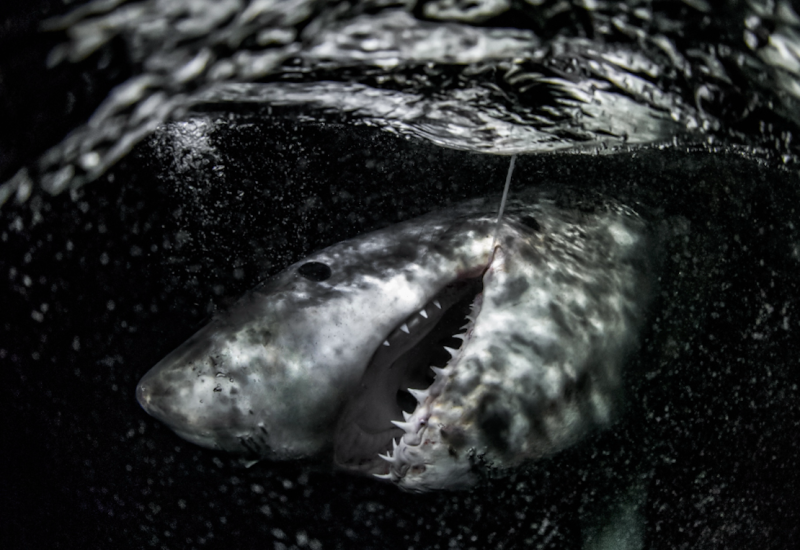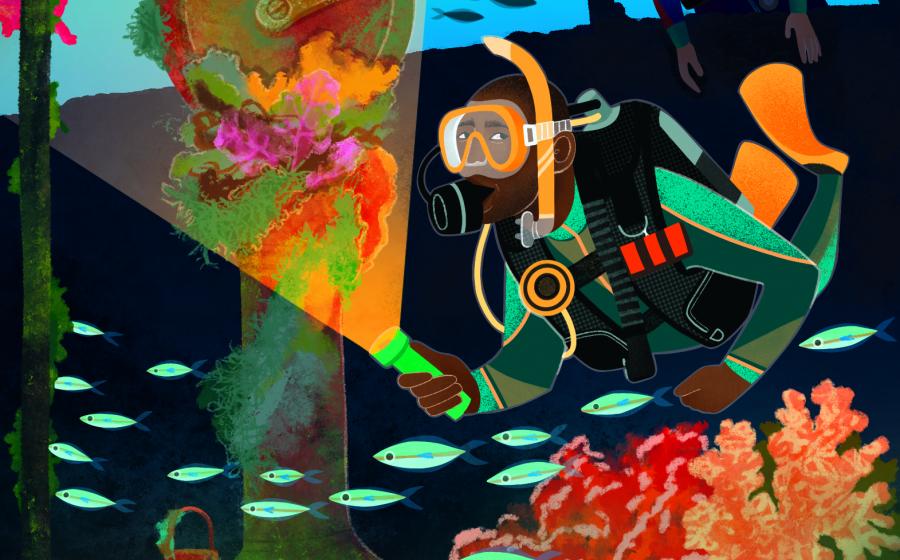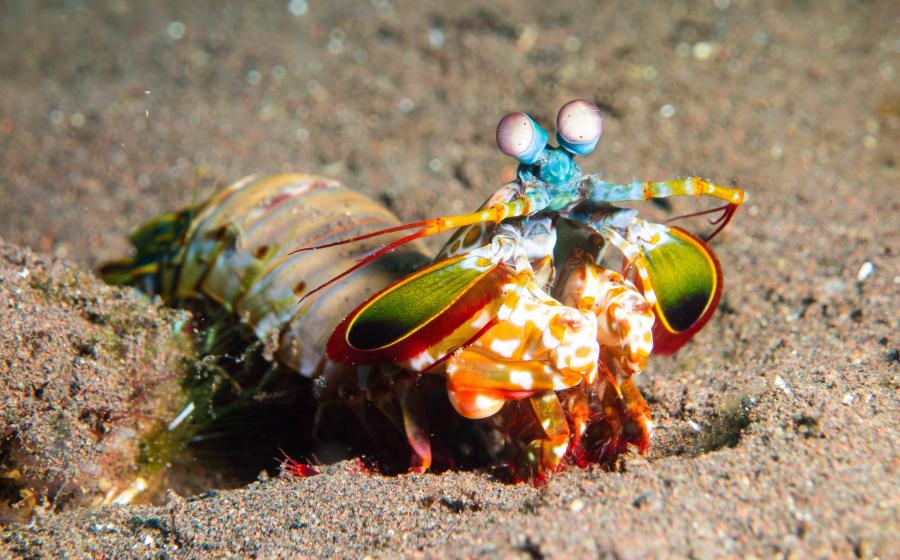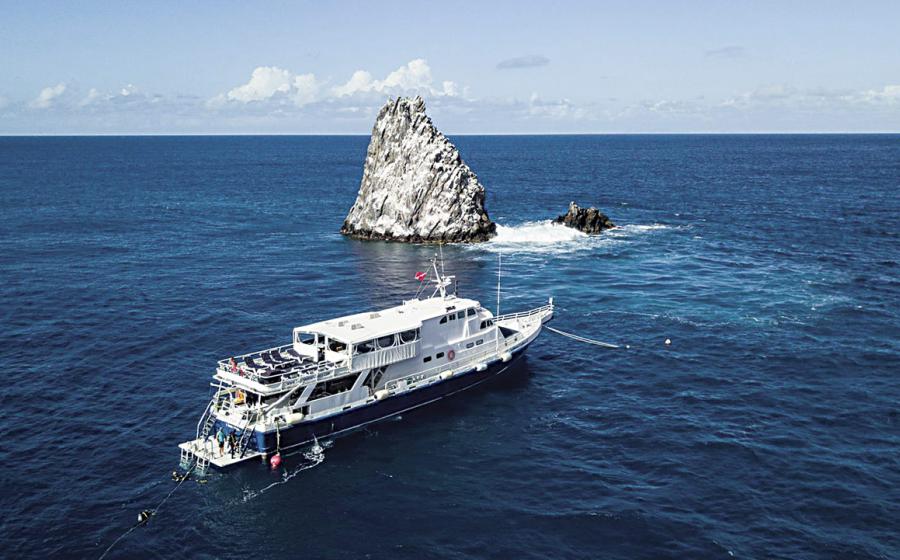What Happens to a Whale Carcass on the Seafloor?
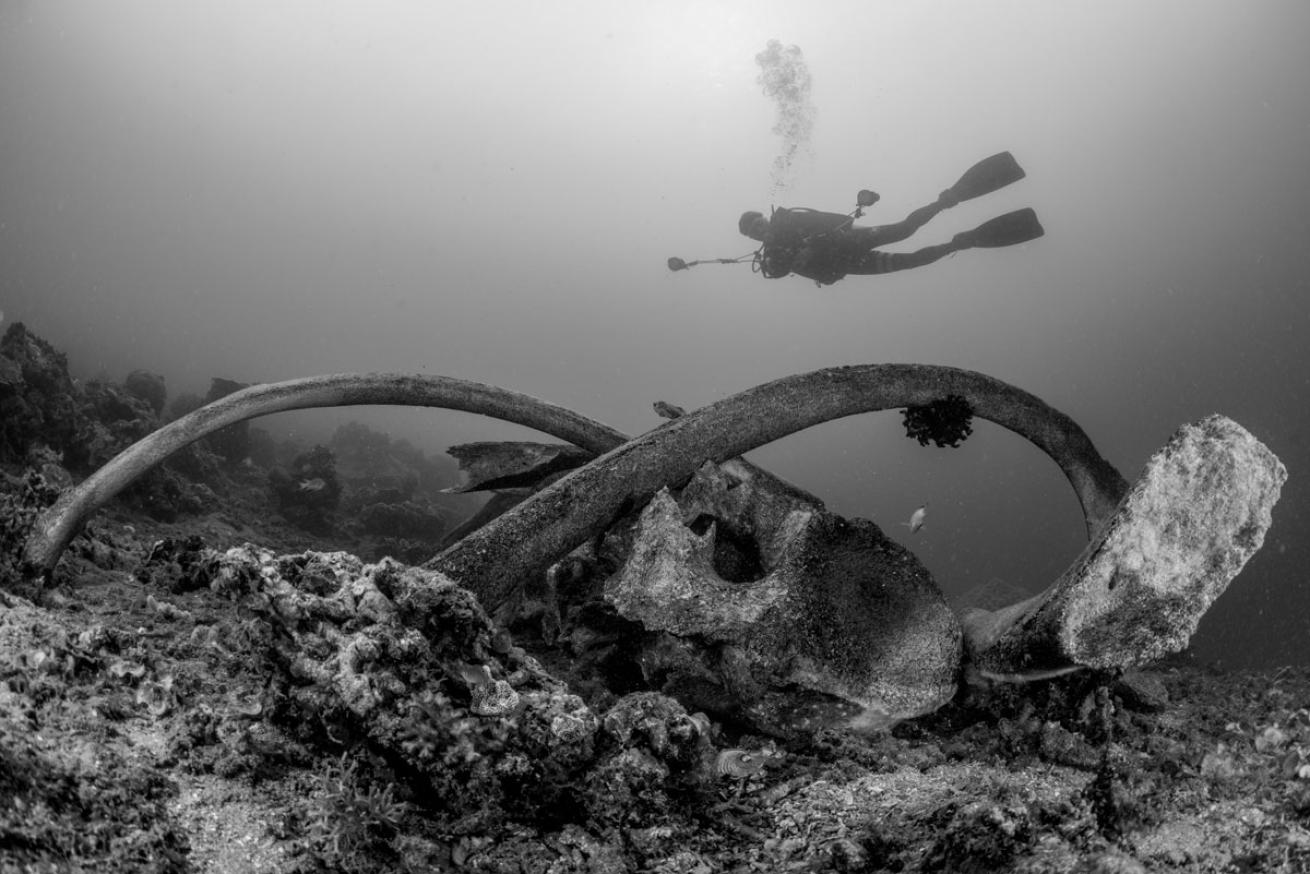
ShutterstockScuba diver over the bones of a sperm whale in Indonesia.
For the creatures that live in the perpetual cold and darkness of the abyssal zone—13,000 to 20,000 feet deep—a whale carcass is like a cruise-ship buffet. Abyssal animals normally depend on “marine snow,” bits of biological detritus that drift down from shallow waters. Whale fall —the term for when a whale’s carcass sinks to the seafloor—can feed tens of thousands of deep-sea animals.
It is the nutritional equivalent of 2,000 years’ worth of marine snow, explains Greg Rouse, a marine biology researcher at Scripps Institution of Oceanography in San Diego who has been studying whale falls off Monterey, California, since 2003.
In November 2011, Rouse and Eddie Kisfaludy, then an operations manager for Virgin Oceanic, persuaded the National Oceanic and Atmospheric Administration to give them a 67-foot, 23-ton fin whale that had washed ashore near San Diego.
Along with some friends aboard a catamaran, Rouse and Kisfaludy towed the whale—nicknamed Rosebud—12 nautical miles from San Diego. It took some patience and the weight of 7 tons of rusty chains and shackles, but Rosebud eventually slipped below the surface.
“The flesh is removed by scavengers in a matter of months, leaving only bones,” Rouse says. “Whale bone is about 50 percent oil that slowly leaks out over the years. This energy sustains a community of bacteria and animals. The fat in the bone is targeted by bone worms that soften the bone. There is also a gradual burying of the bones. All of this can play out over decades or as short a time period of six to seven years.”
Rouse’s research preoccupation is the Osedax bone worm. The 1- to 2.5-inch Osedax, which lacks eyes, stomach, mouth and teeth, depends on a symbiotic species of bacteria that helps digest the whale’s fat. Osedax—the name comes from the Latin word for “bone devourer”—has colorful feathery plumes that act as gills and large egg sacs with green roots that work much the same way as the roots of a garden plant. The bone worms are extraordinarily efficient. They also help scientists like Rouse understand evolution on a much grander scale.
“By making evolutionary trees, we can begin to understand how the organisms we find, say at a whale fall off San Diego, arrived to all be there at the same time,” says Rouse. “Some may have their closest relatives in the North Pacific, while others may have their nearest relatives in the Gulf of Mexico. This lets us relate to past geological events, such as the rise of the Panama Isthmus that separated the Pacific from the Atlantic/Caribbean.”
Rouse last visited Rosebud in 2014, but in late 2018, scientists conducted the most recent survey. “The large white bacterial mat around the whale has now gone and the bones are more eroded,” says Rouse.


